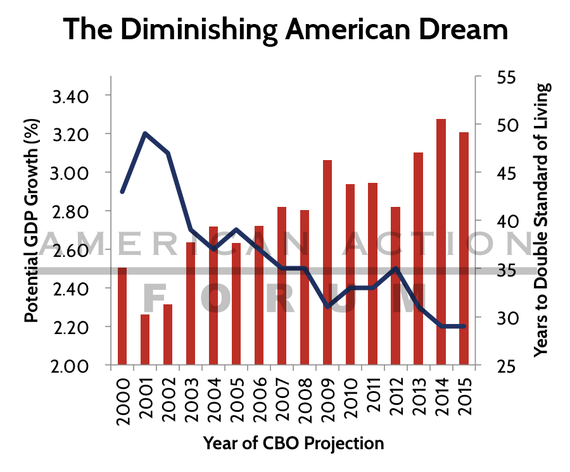The Congressional Budget Office (CBO) just released the 2015 version of its Budget and Economic Outlook. This year's edition contained no real budget surprises: The federal budget remains on an unsustainable course driven by rising spending in mandatory (entitlement) programs despite rising revenues (including as a percentage of GDP) and unrealistic caps on defense and non-defense discretionary (annual) spending. Bad, but not news.
The really important development was that CBO confirmed its pessimistic view of the future of the U.S. economy, pegging the long-run growth potential at 2.2 percent. To grasp the enormity of this projection, consider that since the second quarter of 2009, growth has averaged 2.3 percent. Put bluntly, the dismal and disappointing economic recent past is better than the future.
A different way to wrap one's head around the bad news is presented in the chart below.
The solid blue line shows CBO's successive estimates of the average growth rate in the final years of its economic projection, beginning with the 2000 report and shown each year to the present. Clearly, the CBO has dropped its projected growth enormously.
In part, this reflects the slowing population growth that accompanies the aging of the baby boom generation. Adjusting GDP for the size of the population -- GDP per capita -- yields a simple measure of the standard of living. The red bars in the chart depict the number of years it takes the standard of living to double at CBO's growth rate and projected population growth. While at one time recently it was possible to expect the standard of living to double in 30 years, it is now roughly 50 years.
The American dream may not be dead, but it is now in too distant a future for many to see and believe. The top policy priority should be to enhance growth prospects.

